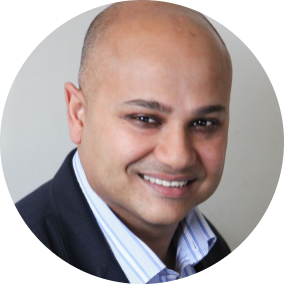Have you ever wondered where the term "Eat that frog" came from?
Why did Brian Tracy use that term in his book title and why did that title sell over 3 million copies?
These questions have been niggling away at me for years, so when I spoke to Brian Tracy about productivity on the Productive Insights podcast, I asked him these questions:
Here's what Brian Tracy told me:
How the book title 'Eat that Frog' came to be and why it worked so well
Brian — a voracious reader — told me that he once came across a story from Mark Twain. At this point, Mark Twain was a very successful professional speaker and author.
Mark said what he learned was that if you ate a live frog first thing in the morning, you'd have the satisfaction of knowing that's the worst thing that could happen to you all day.
You can watch the whole video below (jump to the 2-minute and 25-second mark to get right to the bit where Brian and I discuss the 'Eat that frog' story)
He went on to say there are two corollaries to this law:
- If you have two frogs to eat, eat the ugliest one first!
- If you have to eat a frog, it doesn't pay to sit and look at it for very long.
When Brian was writing a book on time management for salespeople, his publisher asked him if he had a book title.
Brian had originally titled the book "21 great ways to double your sales, and double your time off" which is what he proposed.
The publisher responded by saying it was OK as a title but he quite liked Chapter 15 of Brian's book which was all about the "Eat that frog" idea.
He asked Brian if he'd be open to reworking the book with the theme of "Eat that frog" running through the book.
Brian said OK (as you do to publishers — they usually carry a lot of the risk).
Brian rewrote the whole book and titled it
"Eat That Frog! 21 Great Ways to Stop Procrastinating and Get More Done in Less Time"
Brian went on to say this to me:
... and Ash, I tell you, it must have hit a nerve because we thought it would sell a few thousand copies, sort of as a sideways book. And it started to sell and sell and sell and sell.
And that was about 12 years ago, 12, 13 years ago, we have now sold almost 3 million copies in 51 languages.
It is the best selling book on time management in the history of the world, which makes me the best authority on time management in the world.
And I wrote it sort of on the side, I was busy working in sales and management and marketing and strategic planning and everything else.
So why does this work so well?
Why the 'Eat that frog' philosophy works so well in business and life
Most of us tend to avoid doing important (but not necessarily urgent) tasks as explained by Dwight Eisenhower in his four quadrant approach which came to be known as the Eisenhower matrix.
Why?
Because they tend to be complex and are often hard to do.
Several of these tasks are akin to 'eating that frog' as explained by Brian Tracy. They need to get done, but they're often intimidating.
Getting started is often the hardest part.
The best time to get started on these tasks is first thing in the morning (for most of us). Procrastinating on them doesn't end well.
Here are some examples (Typically these fall in quadrant 2 of the matrix):
- Strategic planning and goal setting
- Spending the time and effort required to interview and onboard great team members
- Building systems that get you off the daily grind and make delegation possible
- Research and development of new ideas and initiatives
- Exercise and other forms of self-care
- Long-term planning and project management
- Maintaining online and offline assets so they don't break down when you least expect it
- Succession planning
As you can see almost all these tasks are easy to procrastinate on, in favor of doing what appears urgent (but not important).
Here are some examples (Typically these fall in quadrant 3 of the matrix):
- Responding to non-urgent emails that don't require your attention right now
- Attending meetings that are fun but don't have any meaningful impact on your long-term goals
- Checking your phone constantly because you're bored or you actually are looking for a distraction (this is a particularly addictive, and therefore dangerous habit)
- Reacting to minor crises
When you allow the quadrant 3 activities to hijack your day, you lose valuable time.
A lot of these tasks are better off delegated or outsourced because they're well below your profit per hour and therefore not worth your time.
The truth is, you don't need to do most of these quadrant 3 tasks at all ...
... provided ....
... you do the quadrant 2 activities like building systems and hiring and training staff to make sure they're handled without your involvement.
So if you want to be effective as a business owner, then you need to 'eat that frog', first thing in the morning.
And it doesn't pay to sit there and stare at it for too long.
What's your "frog"?

